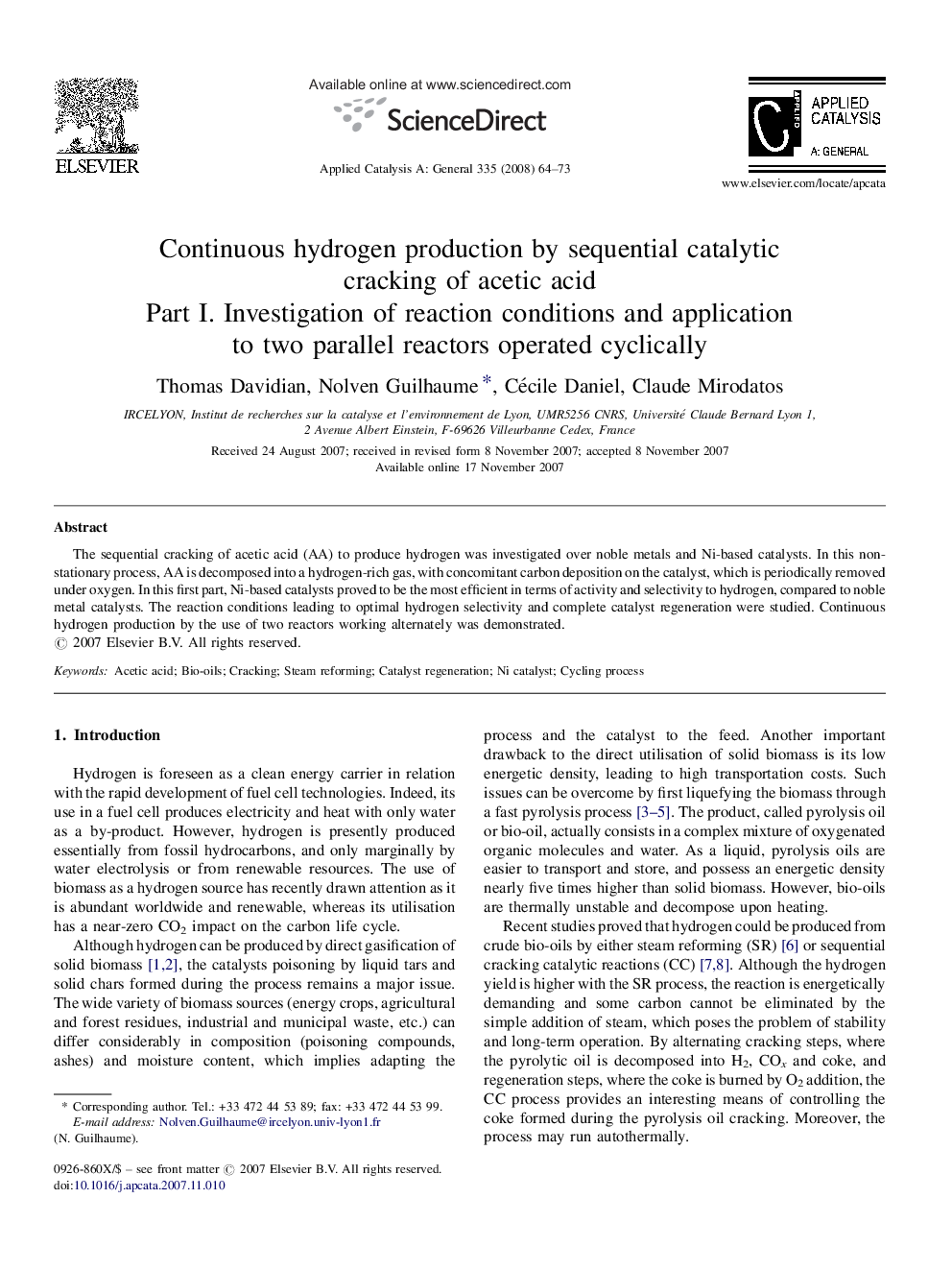| Article ID | Journal | Published Year | Pages | File Type |
|---|---|---|---|---|
| 43808 | Applied Catalysis A: General | 2008 | 10 Pages |
The sequential cracking of acetic acid (AA) to produce hydrogen was investigated over noble metals and Ni-based catalysts. In this non-stationary process, AA is decomposed into a hydrogen-rich gas, with concomitant carbon deposition on the catalyst, which is periodically removed under oxygen. In this first part, Ni-based catalysts proved to be the most efficient in terms of activity and selectivity to hydrogen, compared to noble metal catalysts. The reaction conditions leading to optimal hydrogen selectivity and complete catalyst regeneration were studied. Continuous hydrogen production by the use of two reactors working alternately was demonstrated.
Graphical abstractThe sequential cracking of acetic acid (AA) to produce hydrogen was investigated over noble metals and Ni-based catalysts. In this non-stationary process, AA is decomposed into a hydrogen-rich gas, with concomitant carbon deposition on the catalyst, which is periodically removed under oxygen. Continuous hydrogen production by the use of two reactors working alternately was demonstrated.Figure optionsDownload full-size imageDownload as PowerPoint slide
